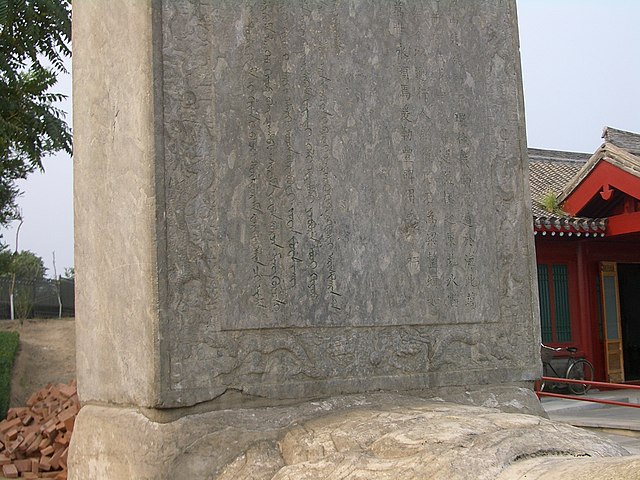The Manchu alphabet is the alphabet used to write the now critically endangered Manchu language. A similar script called Xibe script is used today by the Xibe people, whose language is considered either a dialect of Manchu or a closely related, mutually intelligible language. It is written vertically from top to bottom, with columns proceeding from left to right.
18th century manuscript
A bilingual sign in Chinese (left) and Manchu (right) in the Forbidden City
Coin of Nurhaci, reading Abkai fulingga han jiha, and written ᠠᠪᡴᠠᡳ ᡶ᠋ᠣᠯᡳᠩᡴᠠ ᡴᠠᠨ ᠵᡳᡴᠠ without diacritics (ᠠᠪᡴᠠᡳ ᡶ᠋ᡠᠯᡳᠩᡤᠠ ᡥᠠᠨ ᠵᡳᡥᠠ with later diacritics)
Manchu is a critically endangered East Asian Tungusic language native to the historical region of Manchuria in Northeast China. As the traditional native language of the Manchus, it was one of the official languages of the Qing dynasty (1644–1912) of China, although today the vast majority of Manchus speak only Mandarin Chinese. Several thousand can speak Manchu as a second language through governmental primary education or free classes for adults in classrooms or online.
Plaque at the Forbidden City in Beijing, in both Chinese (left, 乾清門; qián qīng mén) and Manchu (right, kiyan cing men)
The Kangxi Emperor's stele near Lugou Bridge, with parallel Chinese and Manchu text
"Banjin Inenggi" and Manchu linguistic activity by the government and students in Changchun, 2011





